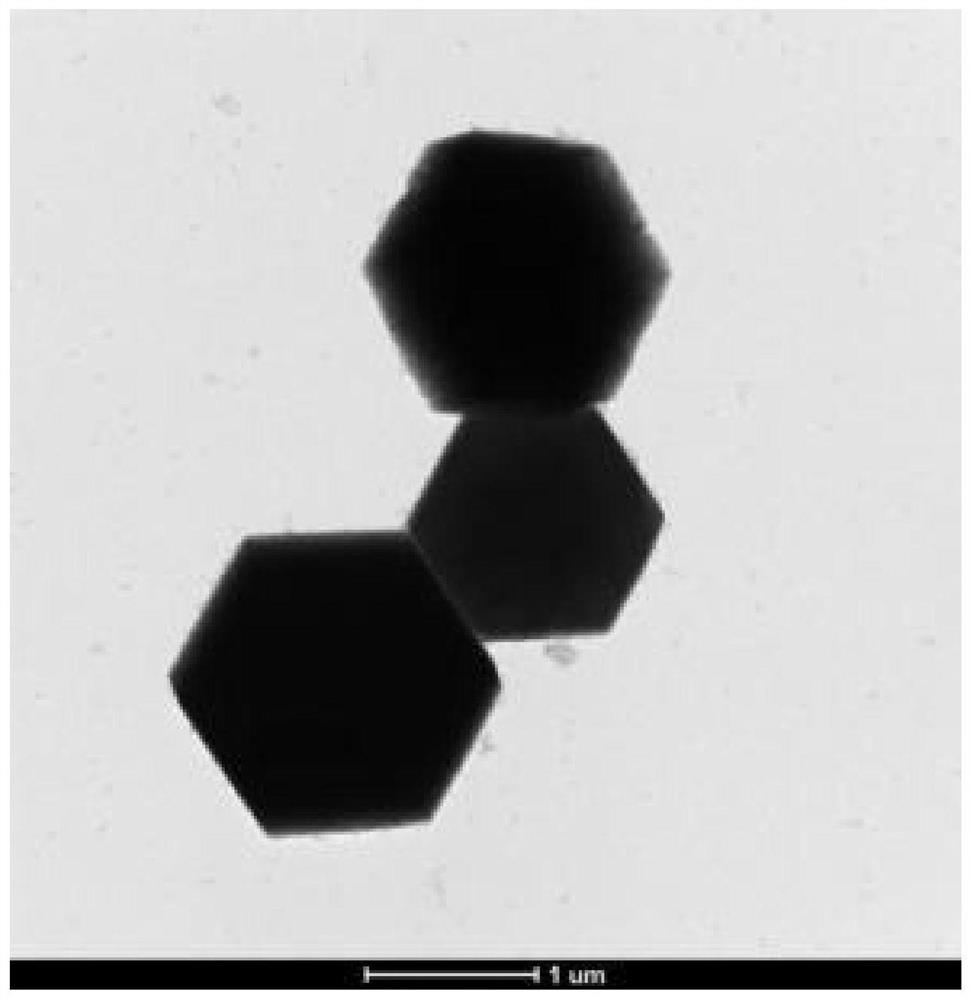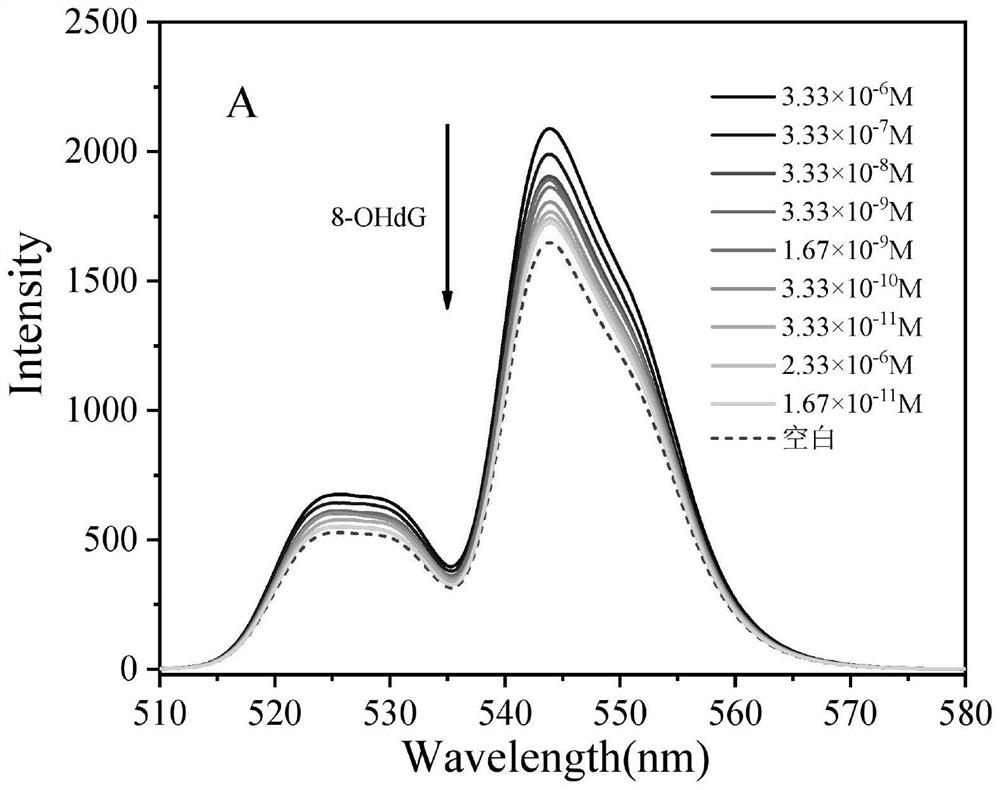Preparation method and application of rare earth up-conversion fluorescence probe for detecting DNA damage marker
A rare earth up-conversion and DNA damage technology, applied in the field of fluorescent nanoprobe detection, can solve the problems of long analysis time, complicated pretreatment, poor repeatability, etc., and achieves low background interference, low probe toxicity and wide linear detection range Effect
- Summary
- Abstract
- Description
- Claims
- Application Information
AI Technical Summary
Problems solved by technology
Method used
Image
Examples
Embodiment 1
[0027] In the present invention, the reported solvothermal method is used to prepare the micro-nano up-conversion material NaYF4:Er,Yb. Add YCl3, YbCl3, ErCl3 solids to 5mL deionized water, add sodium citrate and 10mL deionized water and mix well. Then add the mixed liquid of NaCl, NH4F, oleic acid and ethylene glycol, stir for 30 minutes, put it into the reaction kettle, and react at 180° C. for 6 hours. The lower precipitate was collected by centrifugation, washed three times with ethanol, and finally dried to obtain the micronano up-conversion material NaYF4:Er,Yb powder.
[0028] In the present invention, the following steps are used to modify the surface of NaYF4:Er,Yb by amination. Disperse the NaYF4:Er,Yb powder of the micro-nano up-conversion material obtained above in isopropanol, add polyvinylpyrrolidone, mix and sonicate for 30 minutes, add distilled water and ammonia water in turn, seal at 35°C and stir rapidly with magnetic force for 15 minutes, A mixed solution...
Embodiment 2
[0030] Establishment of Standard Curve for 8-OHdG Detection Using Fluorescent Probes
[0031] Use an acidic buffer solution to prepare a certain concentration of 8-OHdG solution and mix it with acid fuchsin solution, then add NH2-UCNPs, take the same acidic buffer solution and add it so that the total volume is 3mL to obtain a detection solution. The fluorescence spectrum data at 545nm is recorded under 980nm excitation, and the quantitative detection of 8-OHdG is realized according to the difference in fluorescence intensity difference (F-F0) between the detection solution of different concentrations of 8-OHdG and the sample blank.
[0032] The scanning parameters of the fluorescence spectrum are as follows: the excitation wavelength is 980 nm, the scanning speed is 1200 nm / min, the excitation and emission slit widths are both 5 nm, and the PMT voltage is 700 V.
[0033] figure 2 A is the fluorescence response curve of the up-conversion detection system to different concent...
Embodiment 3
[0035] To study the influence of the adding order of each reagent in the detection system on the sensitivity of the system
[0036] Take 1mL of 4mg / L acid fuchsin solution and mix it with 3×10-8mol / L8-OHdG solution, add 1mL of 1mg / mL aminated NaYF4:Er,Yb solution, shake and mix well, add the same buffer solution to make the total volume 3mL, Obtain solution 1 to be tested; mix 1mL acid fuchsin solution with 1mL 1mg / mL aminated NaYF4:Er,Yb solution, add 3×10-8mol / L8-OHdG solution, shake and mix well, take the same acidic buffer solution and add Make the total volume 3 mL to obtain the test solution 2. Under the excitation light of 980 nm, use a fluorescence spectrophotometer to measure the fluorescence intensity of the test solution 1 and test solution 2 at 545 nm. The effect of the order of addition on the sensitivity of the system is as follows: image 3 As shown, the results show that the higher system sensitivity can be obtained when the addition sequence is acid fuchsin—8...
PUM
 Login to View More
Login to View More Abstract
Description
Claims
Application Information
 Login to View More
Login to View More - R&D
- Intellectual Property
- Life Sciences
- Materials
- Tech Scout
- Unparalleled Data Quality
- Higher Quality Content
- 60% Fewer Hallucinations
Browse by: Latest US Patents, China's latest patents, Technical Efficacy Thesaurus, Application Domain, Technology Topic, Popular Technical Reports.
© 2025 PatSnap. All rights reserved.Legal|Privacy policy|Modern Slavery Act Transparency Statement|Sitemap|About US| Contact US: help@patsnap.com



